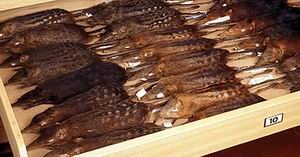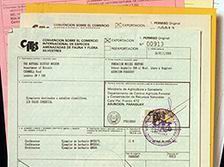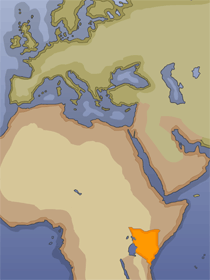Collecting and society
Collecting today
Collecting and conservation
Collecting specimens for scientific research is often necessary, but never as important as preserving the living species or habitat.
Carefully collecting a few specimens of an abundant species will not damage populations of that species. However, if that species is endangered, or rare, we will not collect any specimens, just information and images of it.

Learn more about:
 |
Collecting methods
A range of collecting techniques are used to obtain the required specimens and leave the habitat undamaged. |
|
Some areas of our collection are well developed, and simply do not need any more specimens. For example, we have at least one of nearly every known mammal. |
|
 |
Conserving
It is important to conserve what we already have in the collection, so that further collecting is minimised. |
Collecting policies
Today the Museum only takes specimens from the wild if there is a defined research need. Collecting is also controlled by strict legislation and requires a series of permits and licenses.

There are some species that it is widely considered unethical to collect. For example, we do not collect primates in the wild.
Learn more about:
 |
Loans
At any one time thousands of our specimens are on loan to other researchers, minimising their need to collect fresh material. |
|
We seek to maximise access to our collections for this reason too - if a researcher in another institution can use our specimens, then there will be no need to collect further examples |
|
Collecting together
We do not collect on our own or solely for ourselves. Nearly all of our collecting is collaborative. We also adhere to laws regulating bioprospecting - we ensure that benefits gained from a nation's biodiversity are shared fairly with that nation.
